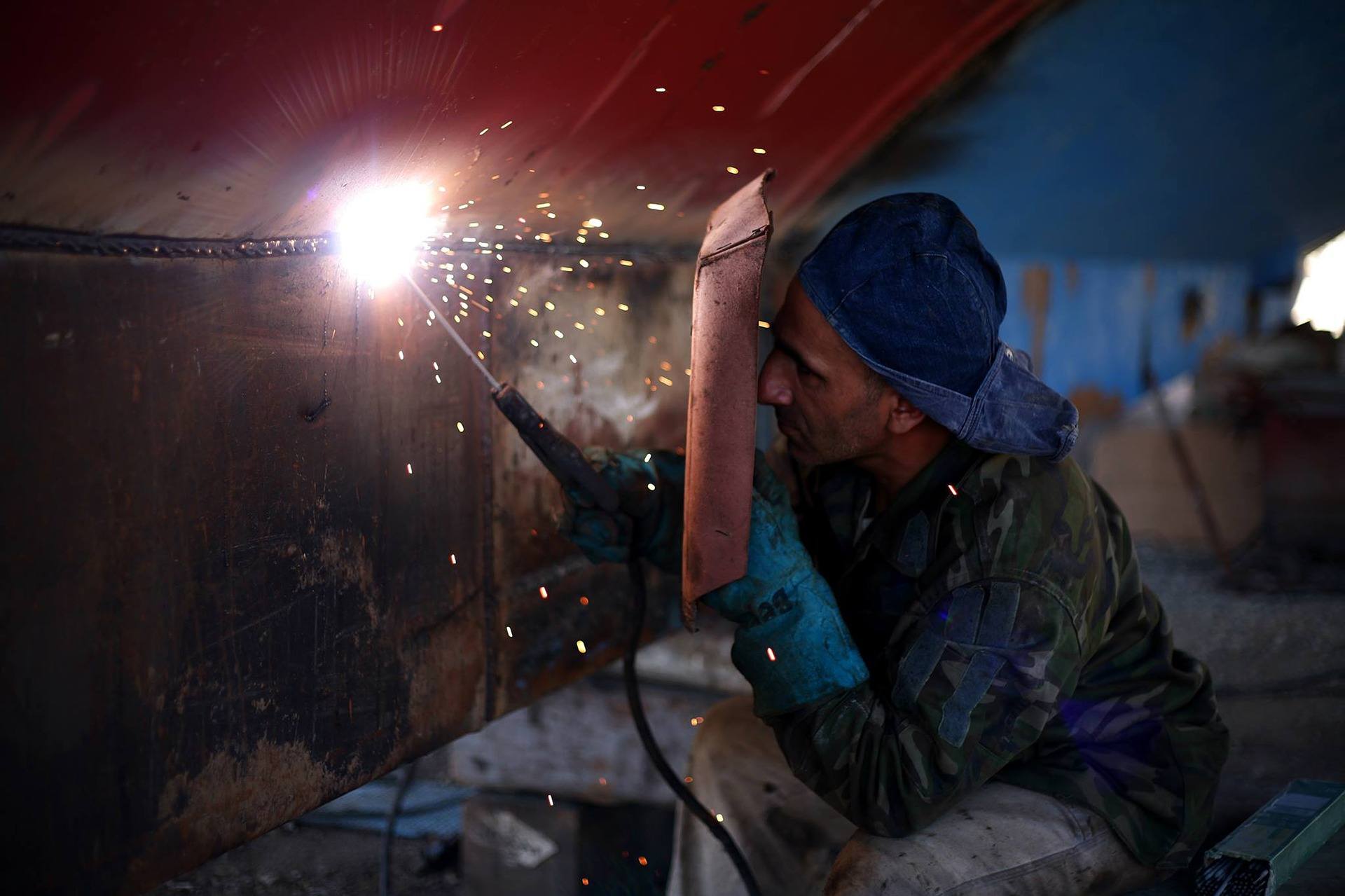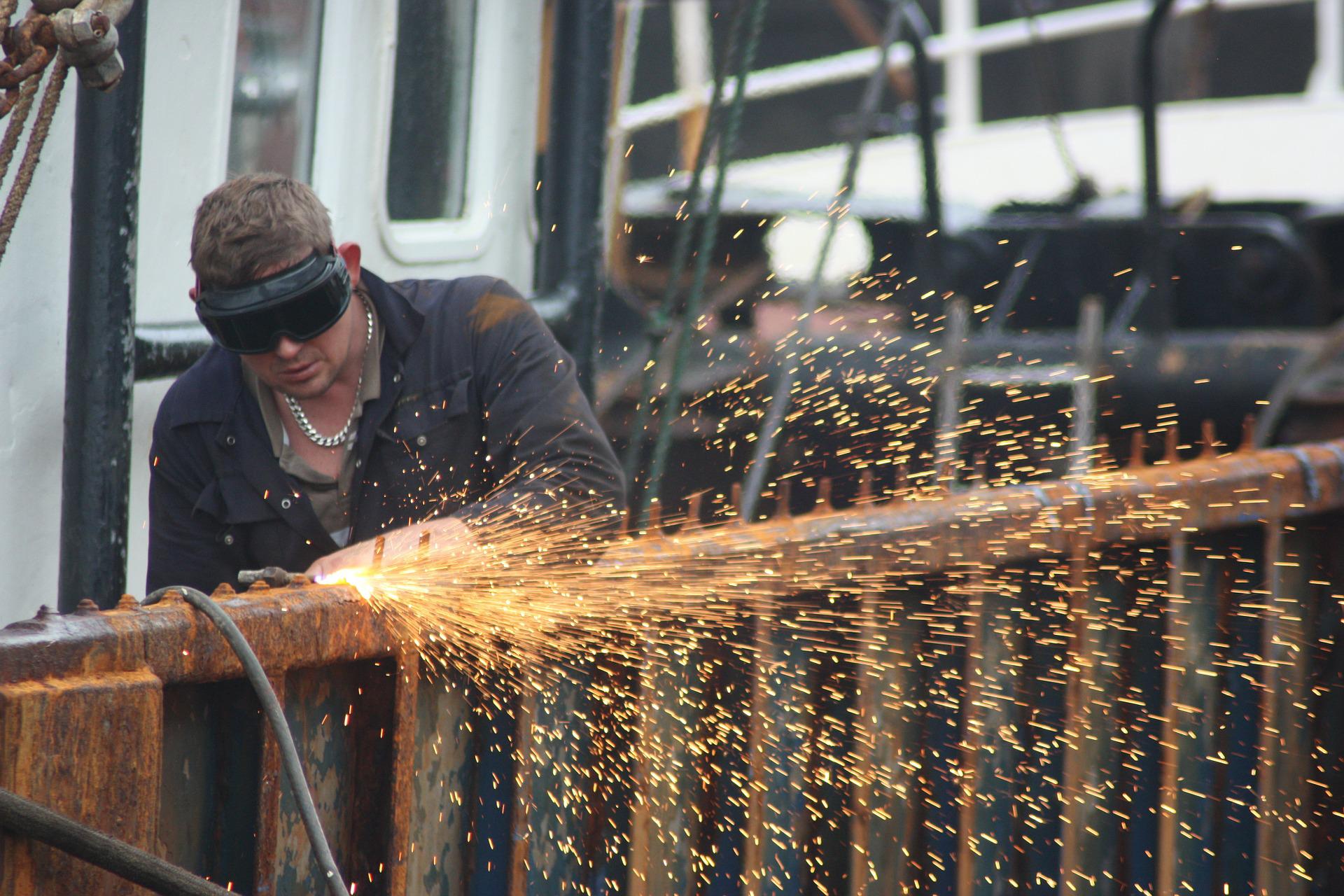When is welding used in shipping? Are you curious about when and how welding is used on ships? Read on to learn all about the types of welding used in ship construction. We look at what is maritime welding and how is maritime welding different from other welding.
Welding in ship construction
Welding is an essential operation in the ship construction field; it is paramount to the integrity of marine or offshore built structures. If welds fail, your entire structure is typically put in jeopardy. Over the last sixty years, numerous research cases and advancements have been made by classification societies.
It allows engineers to provide shipbuilders with welding and fabrication processes that are both manual and automated to help produce reliable and consistent welds for thick sections. Over time the weld quality expectations have grown, and they are now more critical than ever for protecting the lives of those on sea or hovering above the sea on platforms.
Ultrasonic testing (UT) was introduced into the ship construction industry to detect various welding defects to be immediately addressed. For example, they can accurately assess the lack of fusion in each of the welded joints or fillet weld, pores in the harsh or mild steel or any cracks in the dissimilar metals.
What is Maritime Welding?
Maritime welding typically requires a commercial welder will perform offshore oilrigs, which also means they will assist in the building and repairing of marine craft.
As with many types of welding, a maritime welder will connect plastics or welding metals to vastly enhance their tensile strength, flexibility and hardness at a molecular level.
Its materials can withstand extreme temperatures, high pressure and plenty of other stresses that many professionals encounter in the marine environment.

How is Maritime Welding Different from Other Welding?
Maritime welding is relatively different from various other weldings for different industries. One of the most evident and significant reasons it's different is because they frequently produce joints at cross-sections for structures that must be oil-tight and watertight. Unlike riveted joints, welded joints are known for not needing as much maintenance and reducing the overall steel weight.
Welding technology is vital in the maritime and shipbuilding industry, as they must produce robust joints and components that can reduce hull resistance and smooth hull surfaces.
The most common three types of welding used in shipbuilding and some of the most effective methods include the following:
- Arc welding
- Gas welding
- Resistance welding
With the help of gas, electric arc and resistance welding, experienced welders utilise a vast scope of welding techniques that every beginner should be familiar with once they join the line of work:
GMAW, or gas metal arc welding
GMAW is a method that many know for its high welding speeds and minimal distortion of the project piece or electric current metal. It has an incredibly high-quality weld.
SMAW, or shielded metal arc welding
Such welding technique can be completed in different positions, and it is more colloquially known in the industry or to the public as stick welding.
Submerged arc welding
Submerged arc welding (SAW) is typically known for producing immense high-quality welds that many can complete with minimal skills needed.
OAW, or oxyacetylene welding
OAW is an easy welding technique for beginners and training engineers to learn for a hands-on experience. Its materials and equipment tend to be portable and relatively cheap compared to other rigs.
GTAW, or gas tungsten arc welding
GTAW is an excellent method for those wishing to weld thin materials.
Ceramic welding is a method that is becoming increasingly popular in the shipbuilding industry, typically to complete the joints of the shell of two plates on a boat or vessel. Professionals can also use ceramic welding when the side of one weld joint is not entirely accessible.
On the increase in shipbuilding is robotic welding, which is perfect for those challenging unreachable areas. Spot welding and arc welding are two of the techniques most familiar for automatic welding systems and modern welding equipment. Laser welding is also a popular contender in the field due to its concentrated heat source in the metal joining process.
There are far more techniques at engineers' disposal; even tack welds are standard for those joints that need more of a temporary join before being welded together with more advanced welding practices.

Standard Welding Methods In Shipbuilding Industry
Professional engineers use a few common welding methods throughout the shipbuilding industry to create sturdy welds and structures that can withstand the elements. These methods include the following:
Arc Welding
One of the most fundamental principles involved in the arc welding process is that a solid metal electrode is connected to the electrical power supply to curate a closed-circuit once the electrode touches the plate. Suppose a professional raises the electrode a few millimetres above the plate.
In that case, the current will jump the gap and create a high-temperature electrical arc without the risk of weld distortion. Such arc results in the ability to melt the parent metal and inside the electrode, ensuring both metals sufficiently fuse.
An essential part of the arc welding process is the arc shielding aspect, which is most notably helpful in preventing the fused metal from becoming oxidised with slag inclusions.
Arc shield protects it from constant contact with water vapour, oxygen and dangerous gases that the welding equipment emits. Two of the most frequently used shielding techniques that shipyards include: Slag Shielded Arc Welding and Inert Gas Shielded Arc Welding,
Gas Welding
Gas shielded arc welding standard procedures tend to use a blanket of inert gas compared to a flux, and this gas helps to provide adequate insulation for the arc from the encompassing atmosphere. It's extensively utilised for welding shipyards, especially the lighter structures.
Tungsten Inert Gas Welding (TIG):
In the TIG Welding process, engineers and welders will utilise arcs made to slot between the parent metal plates and non-consumable tungsten electrodes. A nozzle surrounds the tungsten electrode allowing it to maintain continuous inert gas flow around the arc. The arc is shielded from oxygen due to the inert gas, stabilising it and reducing the possibility of oxidation in the weld pool.
Introduced to the arc is a filler rod or weld bead, which ultimately helps fuse the metals. Argon is the inert gas often utilised in the TIG welding process, so inhalation of this chemical is hazardous, resulting in dizziness, nausea, loss of consciousness and worse. Welding of this kind is usually preferred for constructing welded plates with a thickness of around 6-8mm.
Metal Inert Gas Welding (MIG):
MIG Welding (Metal Inert Gas) is often considered an advancement on the TIG Welding (Tungsten Inert Gas) technique, which is the instance where electrodes are in the form of a consumable metal wire. The welding torch is connected to the power supply through electrode wires, which is an electrical contact tube allowing the wires to gain heat for welding use.
Using a pair of driver rollers, engineers will feed the electrode wire into its nozzle, wherein the current will pass through the tube at a tremendous pace. A separate line maintains a consistent inert gas flow in the welding torch, creating a thorough blanket of gas around its stabilised arc.
One of the most widely used inert gases for the purpose of welding is carbon dioxide; it emits from the welding tools and surrounds the atmosphere. MIG welding is frequently used for welding deckhouses, overhead deck plates and spherical membrane tank units in gas carriers made of aluminium.
Resistance Welding
The joining of two metals defines resistance welding through a passing current and applying immense pressure. Such happens for a duration as the current makes its way through the metal area to be joined; its heat allows the metal to join together, creating a tight bond. One of the most significant aspects of resistance is that, unlike other welding devices, it requires no other devices or materials to create its bond, making it incredibly cost-effective.
There are numerous different resistance welding forms that all engineers and sheet metal fabricators will be familiar with, including upset, projection, flash and spot and seam welding. Each of these welding methods and techniques differs as they use a range of shapes and types of weld electrodes to apply pressure and conduct the current to an adequate level.
Copper-based alloys are typically used to manufacture the electrodes used in this process because they have excellent conductive properties, unlike other metal materials. They can be successfully cooled by water flowing throughout the electrodes cavities and the resistance welding machines' other conductive tooling parts.
Resistance welding machines have been skilfully designed and built over the years to suit a broad range of applications, including aerospace, automotive and industrial environments. Their uses are only expanding as ideas for the ship's design evolve. Automated welding allows for plenty of these machines to be repeatable and highly controlled, so manufacturers can ensure that staff production is constant and that productivity levels are high for a realistic shop setting.
Why Is Welding Important to the Shipbuilding Industry?
Welding is a critical part of shipbuilding and any significant offshore operations, including the construction of brand-new boats, giant ships and offshore projects, alongside maintenance of existing facilities. Welding is so critical for processes such as shipbuilding, as it allows you to adequately create stable, durable joints that are both oil and watertight.
The durability of the weld on transportation is vital to the integrity of the vehicle, whether it be a ship, train, plane, car, etc. One large ship has hundreds or even thousands of joints that need suitable welding.
Shipbuilders face a wide variety of challenges at the shipyard that promote downtime and prevent progress during operations, which is why it is paramount to ensure that your engineers and fabricators invest in welding equipment and that your team requires the skills and experience to address demands from various applications.
Are you looking for Welding Services in Kent?
If you require fabrication engineering services in Margate, Kent or the surrounding areas get in touch today. Follow the link below to find out more about our metal fabrication services.


